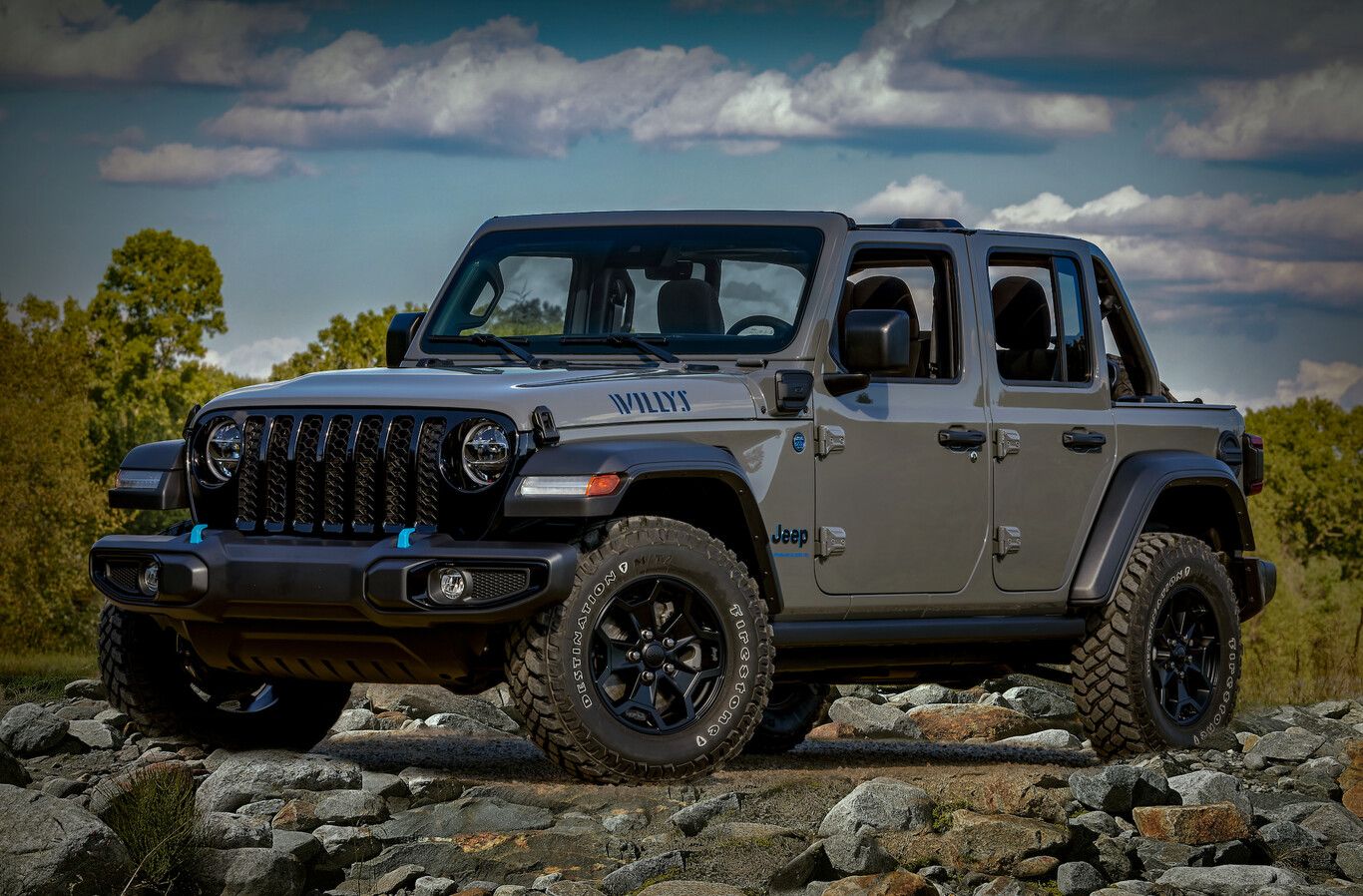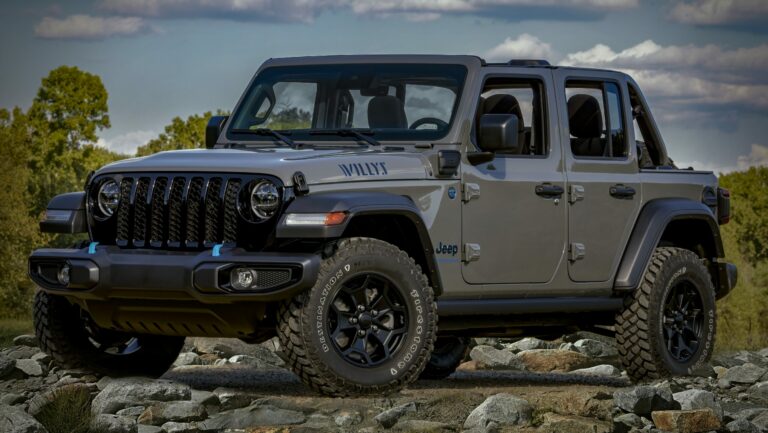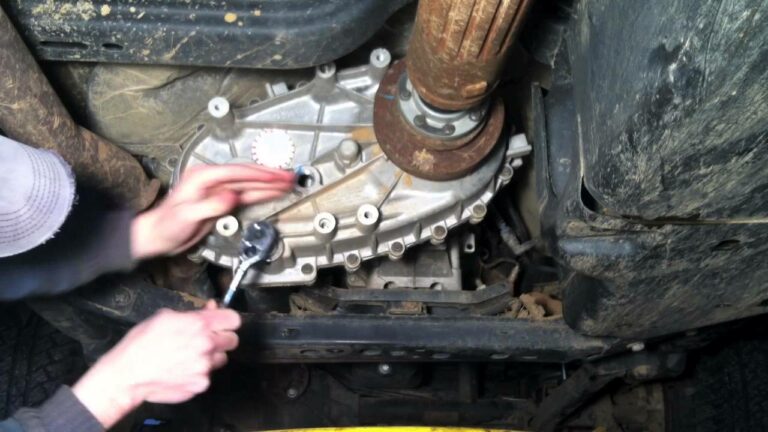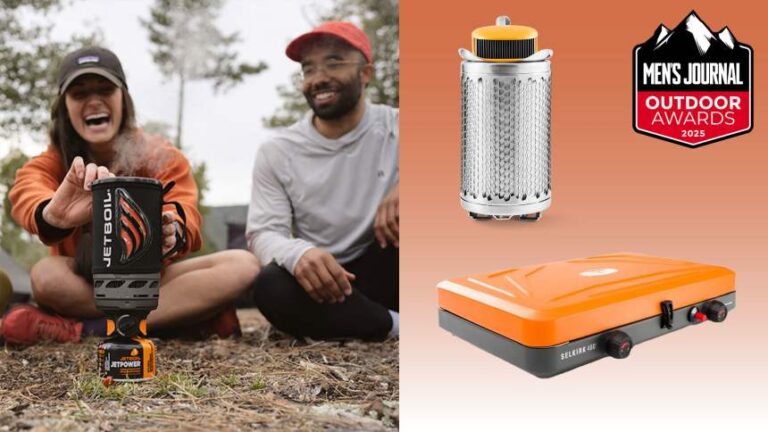Jeep GPW For Sale: Your Definitive Guide to Owning a Piece of History
Jeep GPW For Sale: Your Definitive Guide to Owning a Piece of History jeeps.truckstrend.com
The roar of its engine, the unmistakable silhouette, and the deep connection to a pivotal moment in human history – the Jeep GPW is more than just a vehicle; it’s a rolling testament to ingenuity, resilience, and American manufacturing might during World War II. For collectors, history enthusiasts, and classic vehicle aficionados, the prospect of finding a Jeep GPW for sale represents an exciting journey into the past. This iconic Ford-built version of the legendary Willys MB played a crucial role in Allied victory, becoming synonymous with the battlefield and the "Jeep" name itself.
Acquiring a GPW is not merely a purchase; it’s an investment in a tangible piece of military heritage and a commitment to preserving its legacy. This comprehensive guide aims to equip you with the knowledge, insights, and practical advice needed to navigate the market for a Jeep GPW, ensuring a rewarding and informed acquisition. From understanding its historical significance to evaluating condition, pricing, and ownership considerations, we’ll cover everything you need to know about bringing one of these legendary warhorses home.
Jeep GPW For Sale: Your Definitive Guide to Owning a Piece of History
Understanding the Jeep GPW: A Legacy Forged in War
To truly appreciate a Jeep GPW, one must first understand its origins. As World War II escalated, the U.S. Army urgently needed a lightweight, rugged, and versatile reconnaissance vehicle. Willys-Overland submitted its design, the "MB," which won the initial contract. However, as production demands soared, the government sought additional manufacturers. Ford Motor Company stepped in, producing its nearly identical version known as the "GPW" (G for Government, P for 80-inch wheelbase, W for Willys design).
Ford’s incredible production capacity meant that GPWs were built in vast numbers, often identifiable by the distinctive "F" script stamped on many of their components, from nuts and bolts to larger parts like the chassis and body panels. While functionally identical to the Willys MB, these subtle Ford markings are key identifiers for collectors. The GPW, alongside the MB, became the backbone of Allied ground forces, performing countless roles from troop transport and reconnaissance to ambulance and command vehicle. Its simplicity, durability, and go-anywhere capability earned it an enduring place in military lore and popular culture.
Why Buy a Jeep GPW? The Allure of a Warhorse
The decision to purchase a Jeep GPW extends far beyond mere transportation. It’s about owning a piece of living history, connecting with a bygone era, and joining a passionate community.
- Historical Significance: Owning a GPW is a direct link to the courage and sacrifice of the Greatest Generation. It’s a tangible artifact that evokes stories of wartime ingenuity and the spirit of an entire nation mobilized for conflict.
- Investment Potential: Well-maintained and original GPWs have steadily appreciated in value over the years. As fewer examples remain in good condition, their scarcity contributes to their increasing desirability as collectible assets.
- Unique Driving Experience: Driving a GPW is unlike anything else on the road today. Its raw, unassisted mechanics, direct steering, and open-air design offer a visceral connection to the machine and the environment. It’s a conversation starter wherever it goes.
- Community and Camaraderie: The military vehicle collecting community is vibrant and welcoming. Owners often participate in historical reenactments, parades, and specialized shows, fostering a strong sense of camaraderie and shared passion.
- Restoration Project: For many, the joy comes from the restoration process itself – meticulously bringing a piece of history back to life, learning about its mechanics, and sourcing period-correct parts.

Where to Find a Jeep GPW For Sale: Navigating the Market
![]()
Finding the right Jeep GPW requires patience and knowing where to look. The market is diverse, ranging from highly specialized dealers to private sellers.
- Specialized Classic and Military Vehicle Dealers: These dealers often have a curated inventory of restored or well-preserved GPWs. They typically offer more comprehensive descriptions, provenance, and sometimes even warranties. Prices may be higher, but the peace of mind and expertise can be invaluable.
- Online Marketplaces and Auctions: Websites like eBay Motors, Hemmings Motor News, Bring a Trailer, and specific military vehicle forums (e.g., G503.com) are excellent resources. Be prepared for a competitive bidding environment on auction sites. Always request extensive photos, videos, and documentation.
- Military Vehicle Shows and Swap Meets: These events are prime opportunities to see multiple GPWs in person, speak directly with owners, and network within the community. You might find a private seller looking to downsize or a project vehicle that hasn’t been advertised widely.
- Word of Mouth: Joining military vehicle clubs and forums can lead to unexpected leads. Members often know who is looking to sell or where a hidden gem might be uncovered.
- Estate Sales and Barn Finds: While rare, these opportunities can yield unrestored or forgotten GPWs, often at a lower entry price, but typically requiring significant restoration.

Types of Jeep GPW For Sale: Condition Categories
GPWs for sale typically fall into several condition categories, each with its own price point and implications for ownership. Understanding these categories is crucial for setting realistic expectations and budgeting.
- Concours/Show Quality: These vehicles have undergone a meticulous, frame-off restoration to original factory specifications. Every detail, from the correct paint color and markings to period-correct accessories and "F" script parts, is accurate. They are often trailered to shows and rarely driven extensively.
- Pros: Turn-key, ready for immediate display, highest value retention.
- Cons: Highest price point, often too pristine for casual driving.
- Restored Driver Quality: These GPWs have been restored to a very high standard, are mechanically sound, and are suitable for regular driving and light shows. While highly accurate, they might have minor imperfections or modern upgrades for safety/reliability (e.g., 12V conversion).
- Pros: Enjoyable to drive, good balance of authenticity and usability, strong value.
- Cons: Still a significant investment.
- Running Condition/Patina: These vehicles are mechanically functional and drivable but retain much of their original, unrestored appearance, including wear, minor dents, and faded paint (patina). They often tell a story through their imperfections.
- Pros: More affordable, authentic "survivor" look, can be driven and enjoyed immediately.
- Cons: May require ongoing mechanical attention, not for those seeking perfection.
- Project/Unrestored: These GPWs are typically non-running or in very poor condition, requiring extensive mechanical and cosmetic restoration. They may be incomplete or have significant rust.
- Pros: Lowest entry price, ideal for hands-on enthusiasts who want to perform a full restoration.
- Cons: Requires significant time, money, and expertise; parts sourcing can be challenging.
- Parts Vehicles: These are GPWs in extremely poor condition, often beyond economical restoration, sold primarily for their salvageable components.
- Pros: Very low cost, valuable for sourcing specific original parts for another restoration.
- Cons: Not a complete vehicle, requires significant disassembly.
Key Considerations Before Buying: What to Look For
Purchasing a GPW demands a keen eye and thorough due diligence. Here are critical areas to inspect and inquire about:
- Authenticity and Originality: This is paramount for collectors. Look for the "F" script on components like the frame, engine block, transmission, axles, body panels (especially the firewall, dashboard, and rear panel), and even small parts like bolts and clamps. Verify the serial numbers on the frame, engine, and data plates (usually on the dashboard) match or are consistent with the vehicle’s production year. Be wary of "part-jeeps" assembled from various donor vehicles.
- Rust: The biggest enemy of vintage steel. Inspect the frame (especially around spring hangers and crossmembers), the body tub (floorboards, hat channels, cowl, toolboxes), and fenders. Surface rust is manageable, but extensive rot indicates costly repairs.
- Mechanical Condition:
- Engine: Does it run? Listen for unusual noises, smoke, or leaks. Check oil pressure and compression.
- Drivetrain: Test the transmission (shifting smoothly), transfer case (engages 4×4 and low range), and axles. Look for leaks around seals.
- Brakes: Are they functional? Inspect lines, drums, and master cylinder for leaks.
- Suspension: Check leaf springs, shackles, and shock absorbers for wear or damage.
- Electrical System: Are lights, gauges, and wiring intact and functional? Many GPWs have been converted from 6V to 12V, which is common but note it.
- Completeness: Are all the period-correct accessories present? This includes the pioneer tools (shovel, axe), jerry can, fire extinguisher, and canvas top. Missing items can be costly to source.
- Documentation: A clear title is essential for legal registration. Ask for service records, historical photos, and any other provenance that can authenticate the vehicle’s history. A military bill of sale is often a good sign for untouched examples.
- Professional Inspection: If possible, hire an independent expert or a reputable military vehicle mechanic to perform a pre-purchase inspection. Their specialized knowledge can save you from costly mistakes.
The Buying Process: A Step-by-Step Guide
- Define Your Budget and Desired Condition: Be realistic about how much you want to spend and what level of restoration you’re willing to undertake.
- Research Thoroughly: Learn about GPW specifics for different production years, common issues, and parts availability.
- Locate Potential Sellers: Utilize the resources mentioned earlier (dealers, online, shows).
- Communicate and Ask Questions: Engage with sellers, ask for detailed photos/videos, and inquire about the vehicle’s history, any known issues, and service records.
- Arrange Inspection: If serious, plan an in-person inspection. Bring a flashlight, magnet (to check for body filler), and a notebook. If not possible, arrange a third-party inspection.
- Negotiate Price: Based on condition, originality, and market value, make a fair offer. Don’t be afraid to walk away if something feels wrong.
- Secure Financing (If Needed): Traditional auto loans may not apply to vintage vehicles. Explore classic car financing or personal loans.
- Complete Paperwork: Ensure you receive a clear title, a bill of sale, and any other necessary documentation. Verify VIN/serial numbers match the paperwork.
- Arrange Transport: Most GPWs will need to be trailered, especially if they are non-running or not road-legal.
Ownership and Maintenance Tips
Owning a GPW is a rewarding experience, but it comes with responsibilities.
- Join a Club: Connect with local or national military vehicle clubs. They are invaluable resources for advice, parts, and camaraderie.
- Source Parts Wisely: Many specialized vendors sell reproduction (repro) and New Old Stock (NOS) parts. Understand the difference and prioritize NOS for critical or visible components if authenticity is key.
- Regular Maintenance: GPWs are simple machines, but they require consistent attention. Regular fluid changes, greasing, and checking for loose bolts are crucial.
- Proper Storage: Store your GPW in a dry, covered environment to prevent rust.
- Insurance: Obtain classic car insurance, which typically offers agreed-value policies that protect your investment more effectively than standard auto insurance.
- Learn to DIY: Much of the maintenance and minor repairs can be done with basic tools and a good manual.
Potential Challenges and Solutions
- Rust:
- Challenge: Deep-seated rust requiring panel replacement or extensive fabrication.
- Solution: Professional bodywork, sourcing reproduction body tubs/panels, or embracing the "patina" if not aiming for concours.
- Parts Availability:
- Challenge: Specific "F" script parts can be rare and expensive.
- Solution: Network with other collectors, monitor online forums and auctions, and consider quality reproduction parts where authenticity is less critical.
- Authenticity Issues:
- Challenge: Discovering non-original components after purchase.
- Solution: Research thoroughly pre-purchase, accept that minor deviations are common unless buying a concours vehicle, and prioritize the most significant "F" script parts.
- Title and Registration:
- Challenge: Some GPWs may have incomplete or missing titles, especially barn finds.
- Solution: Research your state’s laws for titling antique or military vehicles. Sometimes a bonded title or a bill of sale with a VIN inspection is sufficient.
- Mechanical Issues:
- Challenge: Finding mechanics familiar with vintage military vehicles.
- Solution: Learn to do basic repairs yourself, consult club members, or find a specialist in your area.
Jeep GPW For Sale: Estimated Price Guide
The price of a Jeep GPW varies significantly based on its condition, originality, and completeness. This table provides a general estimate for the North American market.
| Condition Category | Description | Estimated Price Range (USD) | Key Features/Considerations |
|---|---|---|---|
| Project/Parts | Non-running, heavily rusted, incomplete, or suitable only for parts donation. | $5,000 – $15,000 | Requires complete frame-off restoration, significant parts sourcing, high investment of time/money. Limited "F" script parts. |
| Running/Patina | Mechanically functional, drivable, but retains original wear, faded paint, and minor cosmetic imperfections. | $15,000 – $30,000 | Good for immediate enjoyment. May require ongoing mechanical attention. Originality varies; focus on core components. |
| Driver Quality | Restored to a good functional standard, presentable for casual driving and local shows. | $30,000 – $50,000 | Reliable runner, generally solid body and frame. May have some reproduction parts or minor modern upgrades (e.g., 12V conversion). Good balance of use and display. |
| Restored/Show | High-quality restoration, near-original condition with meticulous attention to detail. | $50,000 – $80,000+ | Highly accurate "F" script details, correct paint and markings. Suitable for shows and parades. Minimal driving, often trailered. |
| Concours/Museum | Flawless, historically accurate, frame-off restoration to exacting original factory specifications. | $80,000 – $120,000+ | Every detail verified, often documented provenance. Best examples for high-level collectors and museum displays. |
Note: Prices are estimates and can fluctuate based on market demand, location, specific historical significance of the vehicle, and the quality of restoration or originality.
Frequently Asked Questions (FAQ) about Jeep GPW For Sale
Q: What’s the main difference between a Willys MB and a Ford GPW?
A: Functionally, they are almost identical. The primary difference lies in the manufacturer and identifying marks. Ford GPWs typically have an "F" script stamped on numerous components (frame, engine, body parts, nuts, bolts), while Willys MBs have "W" or "WO" markings.
Q: Are parts hard to find for a GPW?
A: No, surprisingly, parts availability is quite good. Many specialized vendors sell high-quality reproduction parts, and original "New Old Stock" (NOS) parts can still be found. The strong community also facilitates part sourcing.
Q: Can I drive a GPW daily?
A: While mechanically robust, a GPW is not designed for modern daily driving. They lack modern safety features (seatbelts, airbags), have slow top speeds (around 45-50 mph comfortably), and are not fuel-efficient. They are best suited for recreational driving, shows, and parades.
Q: How much does it cost to restore a GPW?
A: A full, professional, frame-off restoration can easily cost anywhere from $20,000 to $60,000 or more, depending on the initial condition of the vehicle and the desired level of accuracy. DIY restorations can significantly reduce labor costs but still require a substantial investment in parts.
Q: Do GPWs have modern titles and can they be registered for road use?
A: Most GPWs that have been in civilian hands for a while will have a modern title, allowing them to be registered for road use. However, some "barn finds" or military surplus vehicles might only have a military bill of sale, requiring you to navigate your state’s specific process for titling an antique vehicle. Always verify title status before purchase.
Q: What’s the fuel economy like?
A: Expect very poor fuel economy, typically in the range of 10-15 miles per gallon (MPG), depending on driving conditions and mechanical state.
Q: Are they safe to drive on modern roads?
A: GPWs were designed for battlefield conditions, not modern highways. They lack power steering, power brakes, seatbelts, and crumple zones. While mechanically sound examples are safe at lower speeds, caution is advised on busy roads. Many owners install modern turn signals or brake lights for better visibility.
Conclusion
The pursuit of a Jeep GPW for sale is an exciting endeavor, offering the unique opportunity to own a tangible piece of history. Whether you dream of a perfectly restored showpiece, a reliable driver, or a challenging restoration project, the market offers options for every enthusiast. By understanding the GPW’s unique legacy, meticulously evaluating its condition, and navigating the buying process with diligence, you can make an informed decision that brings immense satisfaction.
More than just a vehicle, a GPW is a conversation starter, a tribute to an iconic era, and a gateway to a passionate community. Take your time, do your homework, and you’ll find that owning a Jeep GPW is not just about acquiring a classic car, but about becoming a custodian of a legend.






